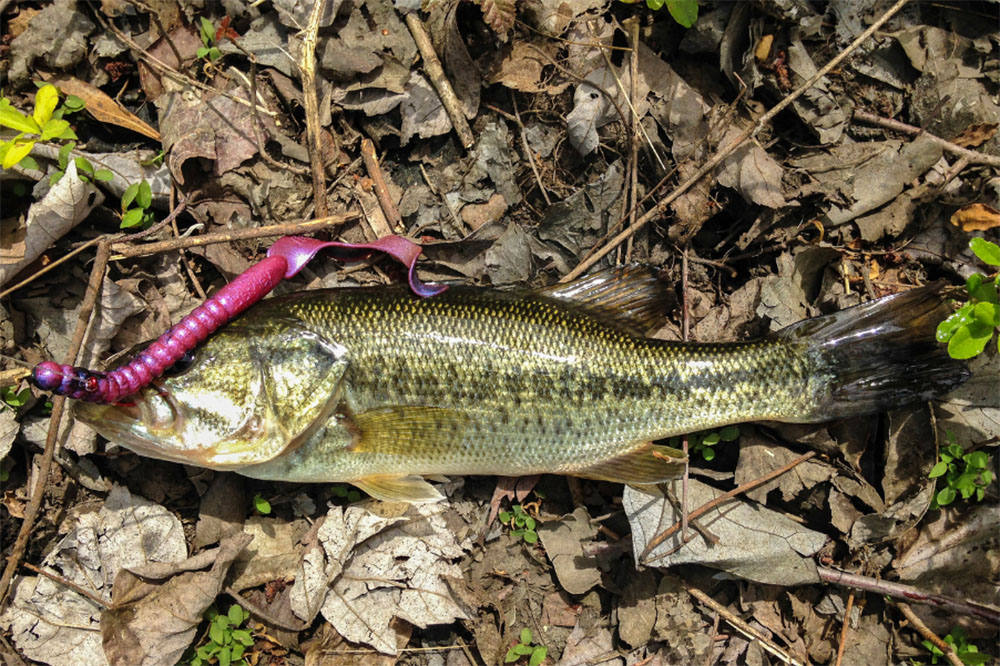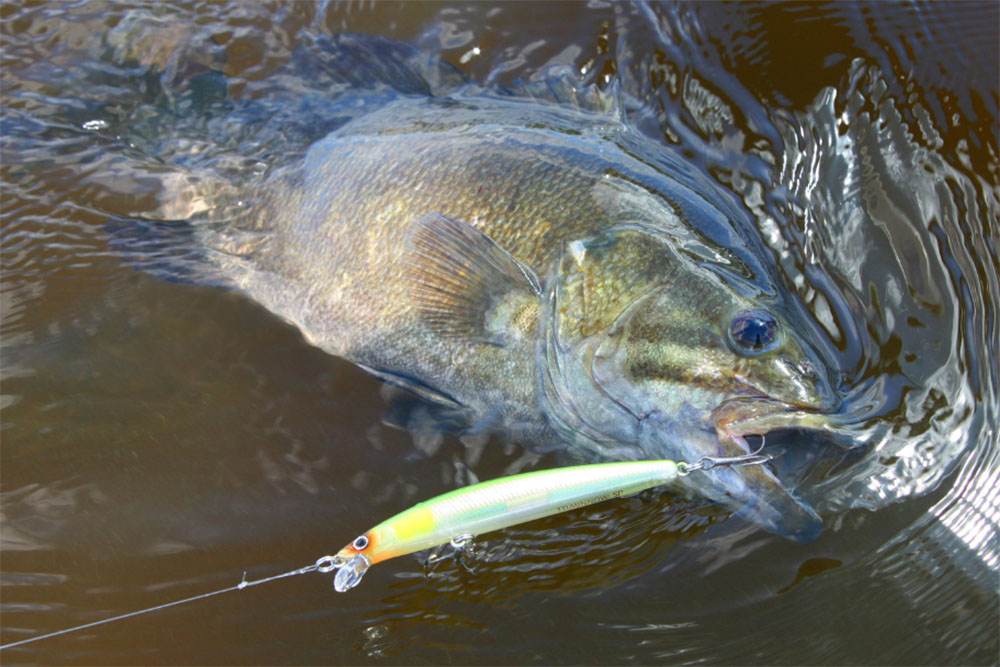Fishing isn’t just an idle pastime; it’s a way of life. Intricate and involving, fishing has always been one of America’s favorite ways to spend a weekend away or a day free from the demands of the madding crowd. The peace and quiet that fishing provides are infectious, and the joy that it inspires is only equaled only by that moment when you feel your line start to twitch, and you know that you’ve snared a fish.
I only make movies to finance my fishing – Lee Marvin.

That moment when the battle to land your prey begins can be intoxicating and is one of the many reasons why so many Americans, including us, are obsessed with fishing.
When most people think about fishing, their thoughts immediately drift to the ocean, and even though sea fishing is a massive part of the pastime, it will always be obscured by the much larger shadow that freshwater fishing casts.
And one of the most popular fish that freshwater anglers regularly pit their wits against is the bass. Or, more accurately, one of the two fish species native to North America, the largemouth and the small (or brown) bass.
The Smallmouth Vs. Largemouth Bass Dilemma
While they belong to the same species, telling the difference between largemouth and smallmouth bass can often be extremely difficult. If you don’t know what you’re looking for, even the most experienced freshwater devotees and bass chasers can have a hard time telling them apart.
That’s why, having dipped our toes and poles in the waterways of America for a couple of decades, we thought we would help you out! We have put together a complete guide, helping you spot the differences between both.
By the time we finish, you should know what type of bass is dangling on the end of your line and which species member you want to pursue in the future.
We’re going to talk about the unique qualities that these members of the bass family possess, their habitats, what sets them apart, and the common behavioral traits that can help you catch them.
Large Or Small – Which Is Which?
As we’ve already mentioned, Bass is one of the most popular fish that freshwater anglers pursue. Their popularity has led to strange misconceptions, half-baked fishing rumors, and folklore becoming a “fact” in the angling community.
It’s important to ignore a lot of what you hear as every angler and their friend has a theory about how to catch bass, what separates them from each other, and how they behave in the wild.
For the most part, all of those ideas, theories, and “facts” are at worst wrong, and at best, only half true.
So, despite what you might have heard in your local bait and tackle store, it’s essential to do one thing before you read any further – forget everything you think you know and get ready to learn everything you need to know.
Technically that’s two things, but you get our point. Forget the bass past, and prepare to embrace the large and smallmouth future.
Why It Matters; Smallmouth Vs. Largemouth Bass
For the most part, both fish look the same, and it’s difficult to tell them apart, but knowing which is which and what separates them, can make all the difference if you want to target one or the other on your next trip.
If you ever find yourself taking part in a breed-specific competition, if you land the wrong kind of bass, you might as well be throwing the entire contest away. At that level of freshwater fishing, your fellow anglers will be able to tell if you’ve caught a largemouth or smallmouth bass.
They can exploit that knowledge to gain an advantage because anything goes, everything is fair, and the rules are the rules when you’re competing in a bass-catching, freshwater competition.
And you can be sure that if the other competitors know the difference, then the judges definitely will, and presenting the wrong catch can mean the difference between first and last place.
It might seem like a relatively minor thing, but the small things matter in fishing, and a little knowledge and how to tell the difference between largemouth bass and its smallmouth cousin, can go a long way.
Largemouth Bass Vs. Smallmouth Bass
As they can and do often share and live in the same lakes and rivers, the easiest way to tell which bass is by looking at them closely.
If you know what you’re looking for, you can tell which of the two you’ve caught, and even though it isn’t easy as being part of the same species, they both tend to look similar; the things that differentiate them soon become glaringly obvious.
Size Matters
If you’ve ever heard someone say that size doesn’t matter, they’re perpetuating an old wife’s tale, and they’re wrong. In nature, size does matter, and it’s one of the quickest ways to know if you’re looking at a largemouth or a smallmouth bass, and it’s their size rather than their external markings that separate the bass.

With a cursory glance, you should be able to ascertain which bass you’re looking at and amaze all of your fishing friends at the same time, who will almost certainly think that you’re the font of all fishing knowledge when you casually exclaim, “Oh, that’s a smallmouth bass.”
The clue to which fish is bigger is all in their names, as it isn’t just their small and largemouths; their bodies are too. Surprisingly, largemouth bass is the larger of the two and can grow to be up to twelve pounds, while smallmouth bass rarely passes the eight-pound threshold. Of course, make sure you hold the bass properly at that weight!
There are, of course, examples of both species cruising past that weight. The biggest largemouth bass ever caught weighed twenty-two pounds, while the largest smallmouth bass ever caught, at eleven pounds and fifteen ounces, weighed almost as much as the average largemouth bass.
It may not be a definitive way to tell them apart, but it’s the easiest and the quickest.
It’s All About The Mouth, Isn’t It?
For the most part, it is about the size of their mouths, but unless you have a frame of reference, you might not know which is which. Again, size matters as the largemouth bass have a much bigger mouth than the smallmouth bass, but the size isn’t as important as the position of their jaw and mouth in relation to the rest of their head.
There’s a reason these fish were given their names, and that’s because size is everything.
As the largemouth bass has a much bigger mouth, its jaw needs to be bigger and stretches beyond the eye line (or position of the fish’s eye on its head) of the fish, and if this is the case with the fish you’ve caught, then it’s largemouth bass.
However, the jaw of the smallmouth bass never passes its eye line and is a sure-fire way to determine which of the two fish it is.
The Dorsal Fin Giveaway
Bass, like sharks, have distinctive dorsal fins, and there is a slight difference between the fins that adorn the backs of the smallmouth and largemouth fish. While the smallmouth’s dorsal fin is completely attached to its body, the largemouth’s dorsal fin has a small gap between it and the fish’s back.
Even though it is an entirely definitive way to tell which fish is which, it does rely on you catching, landing, and examining the fish to find out which type of bass you have on your hands.
Color and Scales
Earlier on, you might recall that we referred to the smallmouth bass as a brown bass, which is because they tend to be brown, while largemouth bass is green.
Again, it isn’t a definitive way to tell them apart, as nature isn’t always precise as far as color is concerned, and the environment that the fish lives in can impact the shade of its epidermis. Still, it’s another clue that can help you solve the puzzle.
It isn’t just the color of their skin that separates largemouth and smallmouth bass either, as their scales are also patterned. The largemouth usually has dark lines running horizontally down its body, while the lines on the smallmouth tend to run vertically.
It Takes Time To Tell Them Apart
As with everything else in life, the longer you do something, the easier it gets, and the more bass you catch, the simpler it’ll be to identify and tell the difference between them.
It might take you a while to determine which is which, but as soon as you get the hang of it, you’ll wonder why you ever thought it was not easy.
Behavioral Science
Almost every species in the world can be identified by the repeated patterns of behavior that they exhibit, and bass is no different. Largemouth bass tends to favor staying close to the bottom of the rivers and lakes and can be lazy and laconic.
In contrast, the smallmouth bass is more excitable and skittish and can often be seen “jumping” out of the water (breaking the surface to catch small insects) in a nervous frenzy.
This frantic behavior often makes them more challenging to catch than largemouth bass. Still, as any experienced angler will happily tell you, the more complex the fishing challenge, the more they enjoy it.
Location, Location, Location
While it’s true that both fish can be found in the same lakes and waterways, they tend to be indigenous to different areas of the country. Thanks to intensive breeding programs, largemouth bass can now be found all over America but are most common in Mexico and the Central States.
In contrast, the smallmouth bass is native to the Mississippi river basin and Great Lakes. Like the largemouth bass, they’ve also become a more common fixture throughout the US thanks to breeding and introductory schemes.
Even though they often inhabit the same water areas, largemouth bass prefers the murkier, muddier depths.
Smallmouth bass favor clearer shallows and faster moving currents in which they are adept at hunting their prey and food. Largemouth bass has also developed a reputation for being an invasive species as their size has allowed them to become an apex predator.
In contrast, smallmouth bass tends to flourish in any environment without causing any undue disruption or harm.
Breeding and Fishing
Both species tend to spawn or breed during the Spring, which coincides with a general rise in the temperature of their habitat. Because they prefer to spawn in warmer water, the population numbers of largemouth and smallmouth bass tend to be far heavier in Southern waters than in Northern.
As their numbers are higher down South, if you want to catch them regularly, that’s where you should head for your fishing vacations.
Thanks to their Spring-based breeding cycles, the ideal time to catch either or both species is between May and July, convenient for booking some much-needed vacation time that can be spent studying and learning how to catch both species of bass.
One of the strangest behavioral patterns of both fish is that during the summer months, largemouth bass tends to prefer shallow water as it’s warmer and murkier during that period.
In contrast, smallmouth bass tends to head to deeper and clearer water throughout the summer. This can make smallmouth bass harder to catch than largemouth on your vacation, but rising to the challenge is what makes catching them much more rewarding.
Catching Bass – The Ideal Set-Up
Having spent some time discussing both fish’ behavior and proffered habitats, we can now move on to the ideal setup and gear that you’ll need to chase them down and catch them.
And because of the areas of water that each fish tends to favor, if you want to improve your chances of success, it’s better to focus on one or the other and choose which of the two you want to fish for.
Fishing For Largemouth Bass
Because they tend to prefer murkier, more sheltered water areas, you’ll need to chase them and use a harder setup if you’re going to fish for largemouth bass.
This means using the best baitcasting reel as it’ll give you the power to clear any reeds or sheltered areas and use a lure that’ll skip over the water and bring the fish to you, rather than having to chase after it continually.
Fishing For Smallmouth Bass
As they tend to prefer faster-moving water, the key to catching smallmouth vs. largemouth bass lies with the strength of the line that you use and the lure you choose.
Ideally, you’ll want to use a lure that won’t sink and that’s been baited with something resembling their natural diet (insects, small shrimp, etc.) to bring them to you.
Again, baitcasters are a perfect rod choice for smallmouth bass, as they’re fast and tough enough to cope with the harder currents that smallmouth bass spends their lives in.
Smallmouth Vs. Largemouth Bass Summary
Knowledge is power, and the more you know about both types of bass, the easier it will be to catch them successfully. Hopefully, we’ve given you enough ammunition to help you on your fishing quest, and as you can now identify both fish and tell them apart, you’ll know-how, and where to find them.





